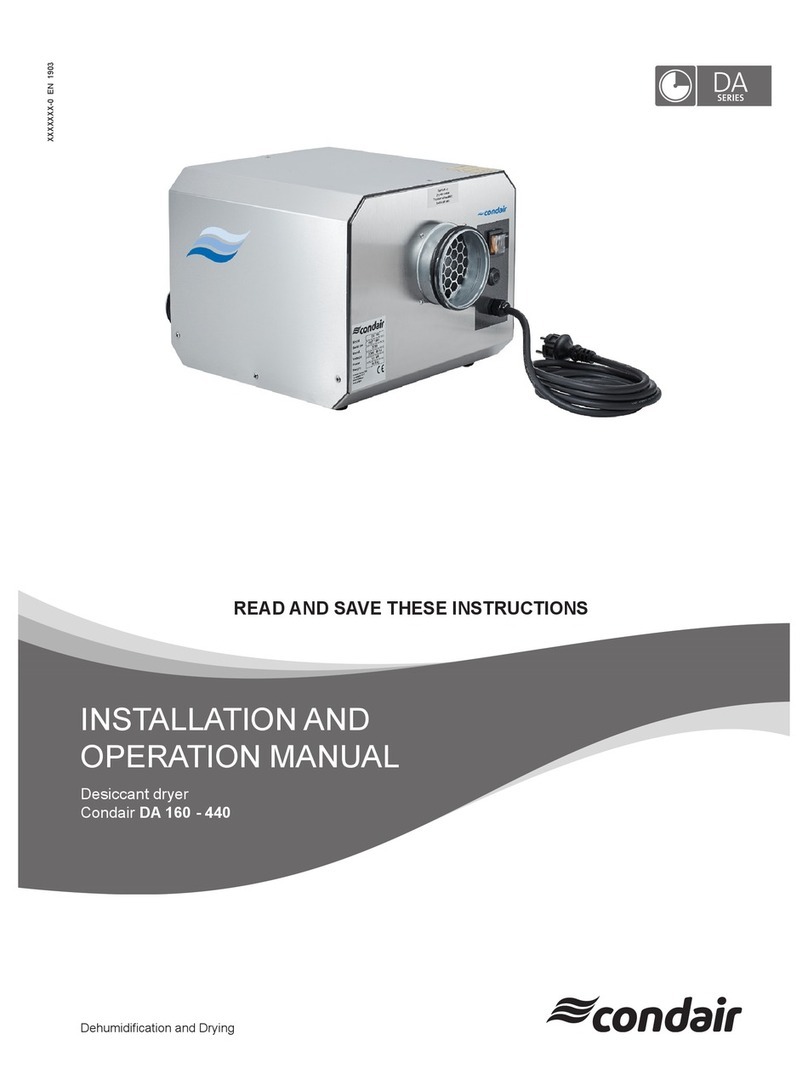
8For your safety
Danger that may arise from the Condair DA desiccant dryer
DANGER!
Dangerofelectrichazard!
The Condair DA desiccant dryer is mains powered. Live parts may be exposed when the unit
is open. Touching live parts may cause severe injury or danger to life.
Prevention: Before carrying out any work set the Condair DA desiccant dryer out of operation (switch
off the unit, disconnect it from the mains) and secure the unit against inadvertent power-up.
WARNING!
Risk of injury!
Inside the Condair DA desiccant dryer there are moving parts present, which can cause seri-
ousinjurytohandsandngers.
Prevention: Before carrying out any work set the Condair DA desiccant dryer out of operation (switch
off the unit, disconnect it from the mains) and secure the unit against inadvertent power-up.
Keep hands away from moving parts.
WARNING!
Risk of burns!
Inside the Condair DA desiccant dryer are heating element present, which can cause burns if
touched.
Prevention: Before carrying out any work set the Condair DA desiccant dryer out of operation (switch
off the unit, disconnect it from the mains), secure the unit against inadvertent power-up, and wait at
least 15 minutes prior to opening any service panel, allowing the heater to cool down.
Warning signs attached to the unit
General Warning
Draws attention to a dangerous situation that can lead to injury or serious da-
mage to health.
Electric shock
Before carrying out any work set the Condair DA desiccant dryer out of operation
(switch off the unit, disconnect it from the mains) and secure the unit against
inadvertent power-up.
Hot surfaces
Hot surfaces inside the device. Before carrying out any work set the Condair DA
desiccant dryer out of operation (switch off the unit, disconnect it from the mains),
secure the unit against inadvertent power-up, and wait at least 15 minutes prior
to opening any service panel, allowing the heater to cool down.
Rotating fan blades
Before carrying out any work set the Condair DA desiccant dryer out of opera-
tion (switch off the unit, disconnect it from the mains), secure the unit against
inadvertent power-up.
Keep hands or other body parts away from moving parts.































